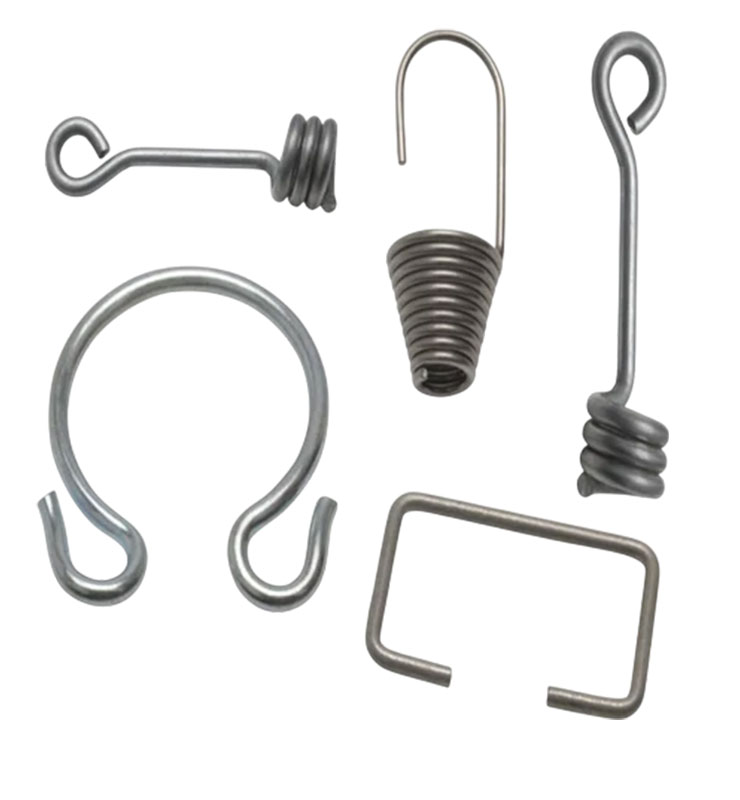
Wire Form Springs
A wire form spring is a type of spring made from a wire that is bent into a specific shape to perform a particular function. Unlike traditional coil springs, which are made by winding a wire into coils, wire form springs are created by bending wire into various forms, shapes, or angles to meet the needs of a particular application.
Key Features of Wire Form Springs
- Custom Shapes: Wire form springs can be designed in a variety of shapes, including loops, angles, or curves. This flexibility allows them to serve a wide range of applications.
- Material: Wire forms are typically made from stainless steel, carbon steel, or alloy steel, depending on the application. For example, stainless steel wire forms are used in corrosive environments, while carbon steel is commonly used for general applications.
- Function: These springs are designed to provide tension, compression, or resistance depending on how they are bent. The wire form is typically used to create a spring-like action in a non-coiled configuration. They can be used to absorb energy, provide support, or apply force.
- Versatile Applications: Ideal for automotive, electronics, medical devices, and consumer products.
Applications: Wire form springs are used in a broad variety of industries and applications, including:
- Automotive: For components like clips, fasteners, or retaining springs.
- Electronics: Used in devices where a precise, small spring is required, such as connectors or switches.
- Consumer Products: Found in items like clips, hangers, and other mechanical fasteners.
- Medical: In devices that require precise control or adjustments, such as surgical instruments or medical equipment.
- Industrial Equipment: Used in machinery for holding parts in place, providing tension, or applying force to mechanical systems.
How It Works
The working principle of wire form springs depends on the way the wire is bent. For instance, when the wire is bent into a loop or hook, it can be used to hold or secure items. If the wire is bent in an arc, it can store energy and resist deformation, similar to a spring. The amount of resistance or force it provides depends on the material, wire diameter, and the geometry of the wire form.
Enquire NowCommon Types of Wire Form Springs
- Tension Wire Forms: These are designed to be pulled or stretched, providing resistance to pulling forces.
- Compression Wire Forms: These are designed to be compressed, offering resistance when force is applied in a compressive direction.
- Retaining Clips or Fasteners: These are used to secure components or prevent movement.
- Extension and Tension Springs: Though more commonly associated with traditional coil springs, wire forms can be used in extension or tension applications by bending the wire into specific forms.
A wire form spring is a versatile and customizable spring made from bent wire, used in a wide range of applications to provide tension, compression, or resistance. The flexibility in design and shape makes wire forms an ideal solution for many industries, from automotive to electronics and beyond.

